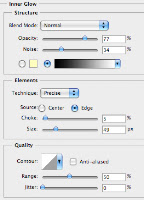Looking back on your preliminary task, what do you feel you have learnt in the progression from it to the full product?
In this evaluation question I am going to focus on the progress I have made from my Preliminary Task to the final version of my Main Task. The preliminary task was almost a warm up in terms of getting used to using programs such as Photoshop and learning about the different features it offers. Seeing as this was the first time I had ever used this sort of image manipulation program I think that my work wasn't too bad, but now reflecting back I can see that I have come a long way with my skills.
I am now fully aware of different conventions and aesthetic design features you would expect to find in a magazine, both school and music. I have also become more comfortable with using new technologies and found that I will pick it up a lot quicker if I stick at it for a while rather than just giving up when it gets slightly tricky.
Through my increased knowledge of the magazine industry, and my increasing passion for getting everything to do with my music magazine perfect, I found that I was putting a lot more care and effort into even things as small as thinking about the background for my photographs and the small effects in photoshop that would give my magazine that extra bit more class. This is something that I didn't really think about doing for my preliminary task, and is something that I will do without even thinking about it now. Everything has to be planned and organised and I never rush into things anymore. This may be the main reason for the difference in quality between my preliminary task and the final copies of my main task.
As you can see from the post containing all of my photos, I had thought quite hard on a suitable setting for the photographs to be taken at and instead of choosing just one location I tried out many. As my target audience focuses mainly on the raver group described on the UK Tribes website, my first idea was to use a club as the location for my setting. Although I thought his would be good as I could make the photos almost perfect being set in a club, I found out that it wasn't such a good idea. The main problem I found was that it was just too dark to get any clarity or detail in the photos. Instead of using these photos, I decided that I needed to take them either outside or in a well lit environment. I tried a variety of other locations mainly in front of different types of walls and railings to give off that underground effect that the drum and bass and dubstep genres have.
Preliminary Task
Main Task
Here is a video showing the progress I have made from my preliminary task to my front page.
















































